| Notes:
The West Midlands Railway (WMR) was formed on 14 June 1860 by the union of the Oxford, Worcester & Wolverhampton Railway (OW&WR) the Newport, Abergavenny & Hereford Railway (NA&HR) and the Worcester & Hereford Railway (W&HR). The WMR was authorised to build a short branch from Old Hill, on the Great Western Railway (GWR) Snow Hill to Stourbridge Junction line, to Halesowen. This short branch was to make an end-on connection with the proposed Halesowen & Bromsgrove Branch Railway (HB&BR) thus creating a through route to Bromsgrove and Longbridge on the Midland Railways (MR) Birmingham to Gloucester route. Before construction could begin the WMR was absorbed by the GWR on 1 August 1863 and it would be the GWR who would oversee the building of the line. The contract to build the line was awarded to Henry Lovatt and the branch opened on 1 March 1878.
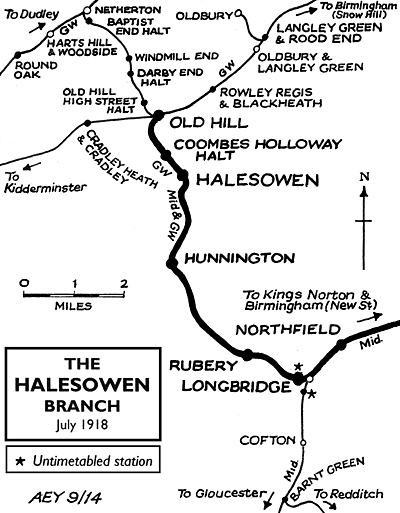 The station opened on 1 March 1878 and consisted of a single platform on which the GWR’s station building stood. It was a single-storey structure with a hipped roof. The red brick of which it was constructed was relieved by lighter string courses and the windows had segmental arches. The platform was sheltered by a flat awning with a serrated valance, supported by wide ornamental brackets, and it extended along about half the length of the building. A goods shed and cattle pens were provided to the north of the station along with associated sidings. In anticipation of the completion of the line from the south, a further platform was added in the early 1880s. On this platform was a substantial waiting room which boasted a bracket-supported awning to complement that on the main building, and there was also a GWR pattern platform-mounted signal box controlling movements within the station. Both platforms were linked by a footbridge which had stringers and landing supports made from old rails and was clad in wood. At this time the track layout was altered with the original platform becoming the up (to Old Hill) and the 1880s additional platform became the down (to Longbridge). The down platform was not directly accessible for through running and any service wishing to stop there had to reverse. It is entirely possible that the GWR saw this as a way of preventing the MR from running through from Old Hill. During 1904 the layout was modified to allow through running via the down platform and the addition of a central siding/run-round loop for MR trains terminating from the south. Photographs do show the two terminating services both using the down platform. The station opened on 1 March 1878 and consisted of a single platform on which the GWR’s station building stood. It was a single-storey structure with a hipped roof. The red brick of which it was constructed was relieved by lighter string courses and the windows had segmental arches. The platform was sheltered by a flat awning with a serrated valance, supported by wide ornamental brackets, and it extended along about half the length of the building. A goods shed and cattle pens were provided to the north of the station along with associated sidings. In anticipation of the completion of the line from the south, a further platform was added in the early 1880s. On this platform was a substantial waiting room which boasted a bracket-supported awning to complement that on the main building, and there was also a GWR pattern platform-mounted signal box controlling movements within the station. Both platforms were linked by a footbridge which had stringers and landing supports made from old rails and was clad in wood. At this time the track layout was altered with the original platform becoming the up (to Old Hill) and the 1880s additional platform became the down (to Longbridge). The down platform was not directly accessible for through running and any service wishing to stop there had to reverse. It is entirely possible that the GWR saw this as a way of preventing the MR from running through from Old Hill. During 1904 the layout was modified to allow through running via the down platform and the addition of a central siding/run-round loop for MR trains terminating from the south. Photographs do show the two terminating services both using the down platform.
In 1905 the Austin Motor Company opened a new car plant at Longbridge. By 1913 the workforce had grown to around 2,300 employees and by the end of the First World War it had 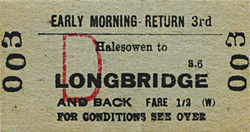 swelled to 22,000. In 1915 the first sidings were laid at the plant and the MR and GWR obviously saw the increasing workforce as a chance to increase passenger revenue along the branch. A new station was constructed in the MR style. Even with the increase in use the general passenger numbers never reached acceptable levels, and in April 1919 the MR withdrew the passenger service between Halesowen and Kings Norton. It was the GWR who introduced a daily workmen’s service each way between Old Hill and Longbridge which called at Halesowen. swelled to 22,000. In 1915 the first sidings were laid at the plant and the MR and GWR obviously saw the increasing workforce as a chance to increase passenger revenue along the branch. A new station was constructed in the MR style. Even with the increase in use the general passenger numbers never reached acceptable levels, and in April 1919 the MR withdrew the passenger service between Halesowen and Kings Norton. It was the GWR who introduced a daily workmen’s service each way between Old Hill and Longbridge which called at Halesowen.
Bradshaw of December 1895 shows there to be 15 services from Old Hill to Halesowen Monday to Saturday with 13 return services and five up and five down services on the GWR & MR joint line. Passenger receipts on the southern section of the branch never lived up to expectations and in April 1919 they were withdrawn. Bradshaw of July 1922 shows a marked improvement in service on the section from Old Hill to Halesowen following the introduction of rail-motors in 1905 with 24 each way from 5.50am through to 9.53pm on Monday-to-Friday and 5.50am to 10.35pm on Saturday in the down direction from Old Hill to Halesowen. Services in the up direction started at 6.07am through to 10.00pm on Monday-to-Friday and 6.07am to 11.05pm on Saturday. Despite this intensive service the competition posed by local omnibus companies forced the GWR to withdraw passenger services on 5 December 1927.
 Bradshaw's of December 1895 shows the sparse service along the southern part of the branch Bradshaw's of December 1895 shows the sparse service along the southern part of the branch
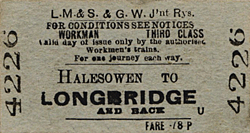 The station remained open for goods, workmen’s trains and excursion traffic, and the line was still busy with the passage of freight to and from the Halesowen Canal Basin and several other sources along the line. Unadvertised workmen’s trains to and from the Austin motor car factory at Longbridge through to Old Hill were operated by the GWR from 1917.
When the railways were nationalised on 1 January 1948 the Halesowen Railway was allocated to British Railways (BR) Western Region, but in a boundary adjustment on 1 February 1958 it was transferred to London Midland Region administration. Private motor vehicle ownership rapidly expanded during the 1950s, and with demand for its train services declining BR announced that the workmen’s trains would be discontinued on 29 August 1958. Representations from Birmingham City Council over the issue of the withdrawal had a limited effect, with the Birmingham New Street to Longbridge being retained temporarily. So, on 29 August 1958, the final Longbridge to Old Hill service departed with the service bring formally withdrawn from 1 September, with the Birmingham New Street services finally ending on 2 January 1960. The council placated inconvenienced passengers with the assurance that the ‘improvements in bus services adequate to cover the workers’ needs’.
By the mid 1950s the station infrastructure was in a terminal decline and pictures of the station 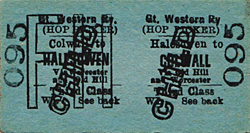 show it in a shocking state. The final freight service on the Halesowen to Rubery section ran on 4 January 1964 and the line was closed from 6 January. Freight continued to work along the northern end of the line until the section from Old Hill to Halesowen was officially closed on 9 September 1968 although, in practice, trains did run to Walter Somers foundry, located near the stations goods shed, until October 1969. show it in a shocking state. The final freight service on the Halesowen to Rubery section ran on 4 January 1964 and the line was closed from 6 January. Freight continued to work along the northern end of the line until the section from Old Hill to Halesowen was officially closed on 9 September 1968 although, in practice, trains did run to Walter Somers foundry, located near the stations goods shed, until October 1969.
Today there is no trace of a station or railway ever having existed in the area. The station site is within an industrial estate and there is not even a roadway name to mark its existence. (Tragic)
Tickets from Michael Stewart and route map by Alan Young.
Sources:
- Bradshaw's Railway Guide December 1895
- Bradshaw's Railway Guide July 1922
- A Regional History of the Railways of Great Britain - Volume 7 The West Midlands - Rex Christiansen - David St John Thomas Publisher 1991
- A Century of Railways around Birmingham and the West Midlands - John Boynton - Mid England Books Publisher 1999
- Lost Lines Birmingham and the Black Country - Nigel Welbourn - Ian Allan Publishing 2002/2006
- Lost Railways of Birmingham & The West Midlands - Terry Moors - Countryside Books 2008
-
To see other stations an the Halesowen branch click on the station name:
Longbridge 2nd, Rubery , Hunnington, Coombes Holloway Halt & Old Hill
See also:
Longbridge 1st & Longbridge 3rd
|

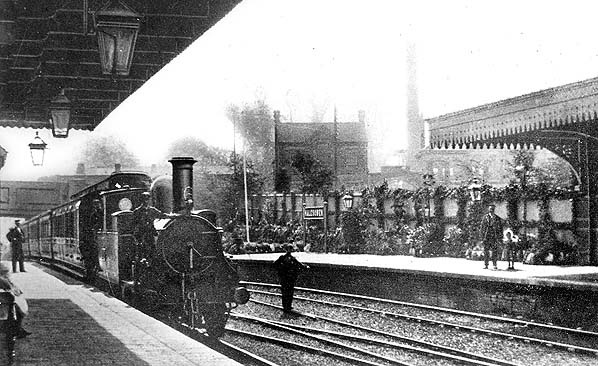
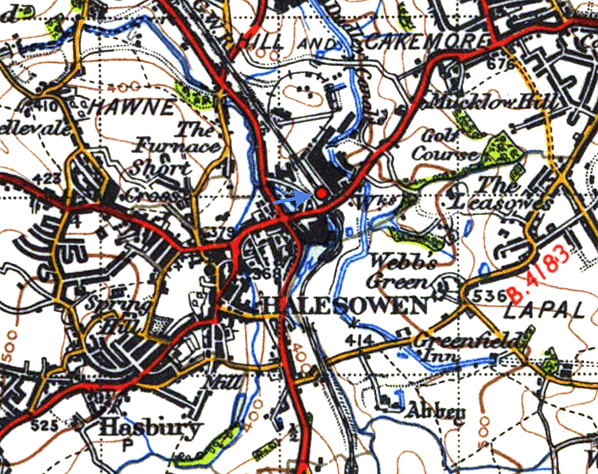
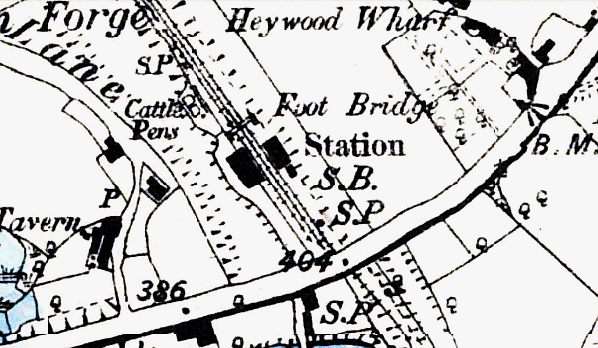
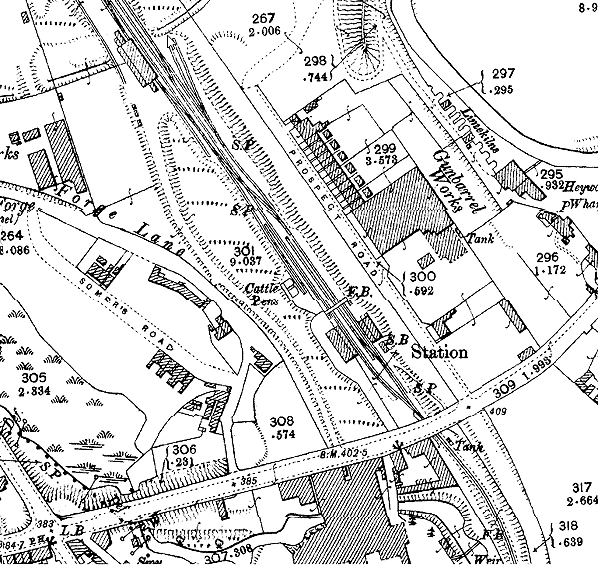
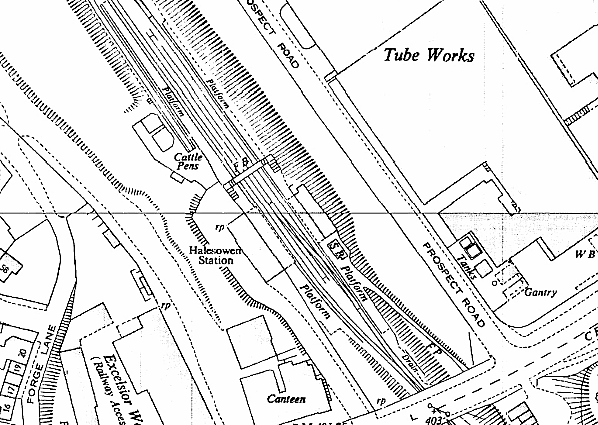
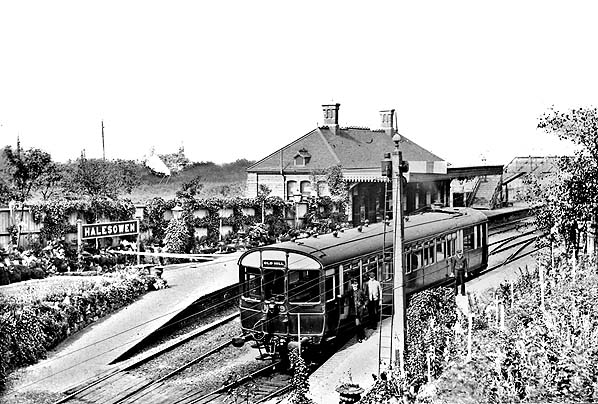
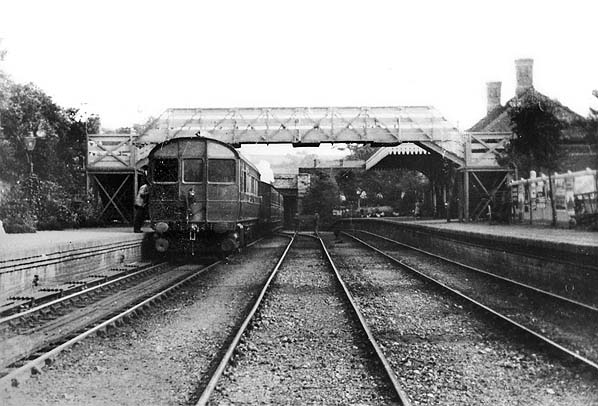
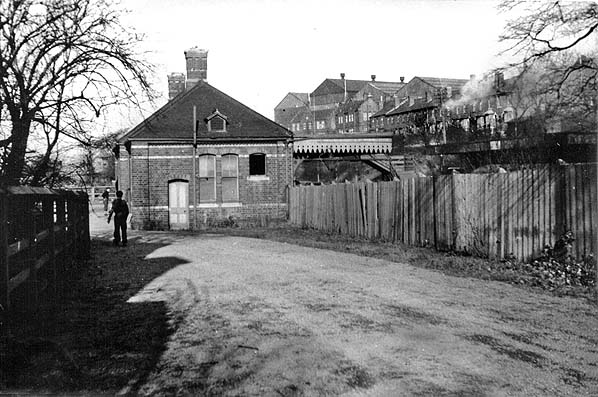
 The station opened on 1 March 1878 and consisted of a single platform on which the GWR’s station building stood. It was a single-storey structure with a hipped roof. The red brick of which it was constructed was relieved by lighter string courses and the windows had segmental arches. The platform was sheltered by a flat awning with a serrated valance, supported by wide ornamental brackets, and it extended along about half the length of the building. A goods shed and cattle pens were provided to the north of the station along with associated sidings. In anticipation of the completion of the line from the south, a further platform was added in the early 1880s. On this platform was a substantial waiting room which boasted a bracket-supported awning to complement that on the main building, and there was also a GWR pattern platform-mounted signal box controlling movements within the station. Both platforms were linked by a footbridge which had stringers and landing supports made from old rails and was clad in wood. At this time the track layout was altered with the original platform becoming the up (to Old Hill) and the 1880s additional platform became the down (to Longbridge). The down platform was not directly accessible for through running and any service wishing to stop there had to reverse. It is entirely possible that the GWR saw this as a way of preventing the MR from running through from Old Hill. During 1904 the layout was modified to allow through running via the down platform and the addition of a central siding/run-round loop for MR trains terminating from the south. Photographs do show the two terminating services both using the down platform.
The station opened on 1 March 1878 and consisted of a single platform on which the GWR’s station building stood. It was a single-storey structure with a hipped roof. The red brick of which it was constructed was relieved by lighter string courses and the windows had segmental arches. The platform was sheltered by a flat awning with a serrated valance, supported by wide ornamental brackets, and it extended along about half the length of the building. A goods shed and cattle pens were provided to the north of the station along with associated sidings. In anticipation of the completion of the line from the south, a further platform was added in the early 1880s. On this platform was a substantial waiting room which boasted a bracket-supported awning to complement that on the main building, and there was also a GWR pattern platform-mounted signal box controlling movements within the station. Both platforms were linked by a footbridge which had stringers and landing supports made from old rails and was clad in wood. At this time the track layout was altered with the original platform becoming the up (to Old Hill) and the 1880s additional platform became the down (to Longbridge). The down platform was not directly accessible for through running and any service wishing to stop there had to reverse. It is entirely possible that the GWR saw this as a way of preventing the MR from running through from Old Hill. During 1904 the layout was modified to allow through running via the down platform and the addition of a central siding/run-round loop for MR trains terminating from the south. Photographs do show the two terminating services both using the down platform. swelled to 22,000. In 1915 the first sidings were laid at the plant and the MR and GWR obviously saw the increasing workforce as a chance to increase passenger revenue along the branch. A new station was constructed in the MR style. Even with the increase in use the general passenger numbers never reached acceptable levels, and in April 1919 the MR withdrew the passenger service between Halesowen and Kings Norton. It was the GWR who introduced a daily workmen’s service each way between Old Hill and Longbridge which called at Halesowen.
swelled to 22,000. In 1915 the first sidings were laid at the plant and the MR and GWR obviously saw the increasing workforce as a chance to increase passenger revenue along the branch. A new station was constructed in the MR style. Even with the increase in use the general passenger numbers never reached acceptable levels, and in April 1919 the MR withdrew the passenger service between Halesowen and Kings Norton. It was the GWR who introduced a daily workmen’s service each way between Old Hill and Longbridge which called at Halesowen.  Bradshaw's of December 1895 shows the sparse service along the southern part of the branch
Bradshaw's of December 1895 shows the sparse service along the southern part of the branch
 The station remained open for goods, workmen’s trains and excursion traffic, and the line was still busy with the passage of freight to and from the Halesowen Canal Basin and several other sources along the line. Unadvertised workmen’s trains to and from the Austin motor car factory at Longbridge through to Old Hill were operated by the GWR from 1917.
The station remained open for goods, workmen’s trains and excursion traffic, and the line was still busy with the passage of freight to and from the Halesowen Canal Basin and several other sources along the line. Unadvertised workmen’s trains to and from the Austin motor car factory at Longbridge through to Old Hill were operated by the GWR from 1917. show it in a shocking state. The final freight service on the Halesowen to Rubery section ran on 4 January 1964 and the line was closed from 6 January. Freight continued to work along the northern end of the line until the section from Old Hill to Halesowen was officially closed on 9 September 1968 although, in practice, trains did run to Walter Somers foundry, located near the stations goods shed, until October 1969.
show it in a shocking state. The final freight service on the Halesowen to Rubery section ran on 4 January 1964 and the line was closed from 6 January. Freight continued to work along the northern end of the line until the section from Old Hill to Halesowen was officially closed on 9 September 1968 although, in practice, trains did run to Walter Somers foundry, located near the stations goods shed, until October 1969.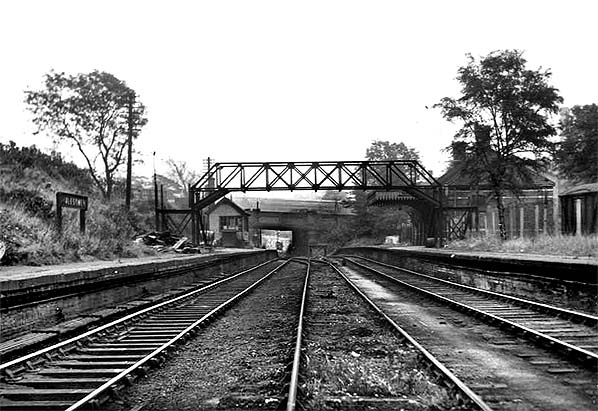
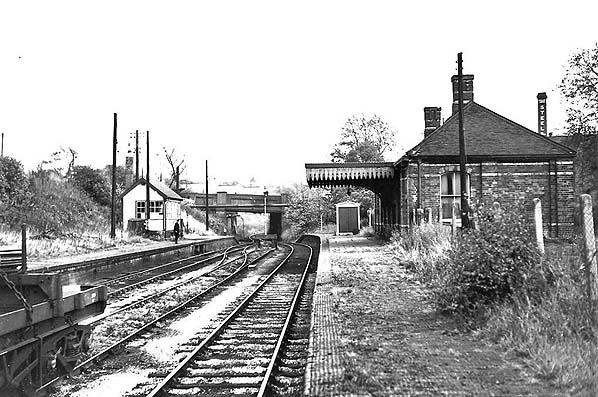
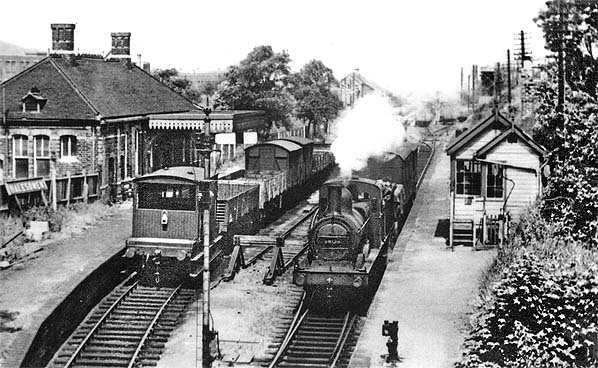
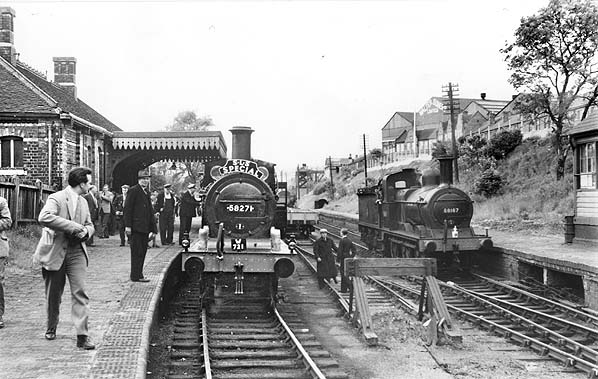
old1.jpg)
2.jpg)
1.jpg)
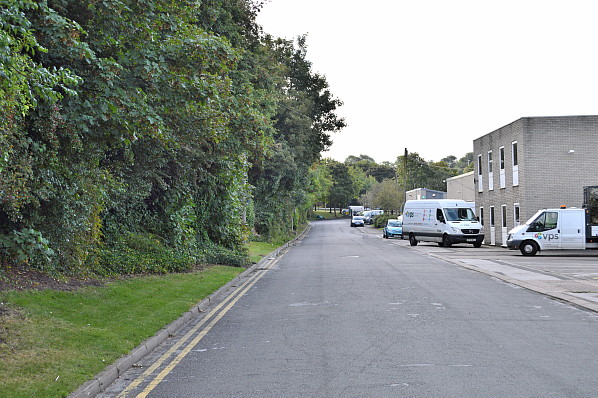
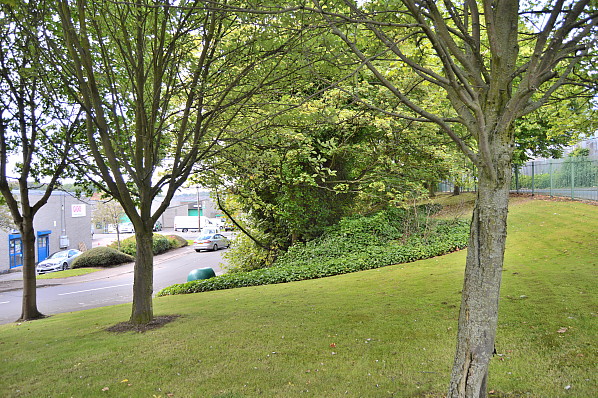

 Home Page
Home Page